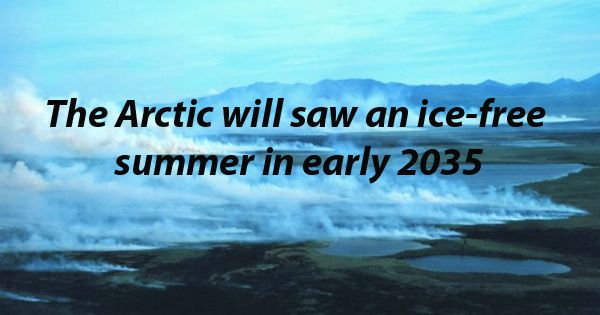A new study published in the journal Nature Climate Change has used a new and improved model based on the last intercultural period to suggest that shallow pools of rain and molten water could be free of sea ice by early 2035.
Every year Arctic sea ice fluctuates with the seasons, it expands as the sea surface freezes during the winter months, covering nearly the entire Arctic Ocean, around 6 million sq m. It then melts in the summer months, reaching its lowest point in September.
Arctic sea ice has been declining rapidly for decades. In the summer of the 1930s, ice-covered about 3.8 million square meters, but this summer, sea ice-covered about 2.8 million square meters.
During the last intercontinental period, about 127,000 years ago, the Arctic had high temperatures that scientists have been wondering for decades. To date, computer models have not been able to mimic the warmest temperatures during the last intercontinental period.
But now climate model researchers at the Hadley Center in the UK Met Office have been able to compare the state of Arctic sea ice with the current state of the last interrelated state. Their findings are important for improving the forecast of future sea ice changes.
Researchers have found that if climate change and greenhouse gas emissions are not tested, the Arctic will be ice-free by September 2035 – a month where Arctic sea ice reaches its lowest point each year. In other emission situations, researchers have predicted the disappearance of sea ice between September 2048 and September 2086.
Jens Heselzer. A geologist who worked on the study, published in July, said in a statement.















